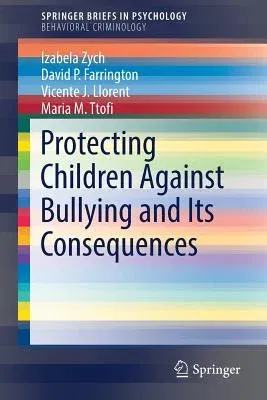This compact resource synthesizes current research on bullying in the
schools while presenting strengths-based approaches to curbing this
growing epidemic. Its international review of cross-sectional and
longitudinal studies unravels the complex dynamics of bullying and
provides depth on the range of negative outcomes for bullies, victims,
enablers, and victims who bully. Chapters on protective factors against
bullying identify personal competencies, such as empathy development,
and keys to a positive school environment, featuring findings on
successful school-based prevention programs in different countries.
Throughout, the authors clearly define bullying as a public
health/mental health issue, and prevention as a deterrent for future
antisocial and criminal behavior.
Included in the coverage:
- School bullying in different countries: prevalence, risk factors, and
short-term outcomes.
- Personal protective factors against bullying: emotional, social, and
moral competencies.
- Contextual protective factors against bullying: school-wide climate.
- Protecting children through anti-bullying interventions.
- Protecting bullies and victims from long-term undesirable outcomes.
- Future directions for research, practice, and policy.
With its wealth of answers to a global concern, Protecting Children
against Bullying and Its Consequences is a definitive reference and
idea book for the international community of scholars in criminology and
developmental psychology interested in bullying and youth violence, as
well as practitioners and policymakers.


